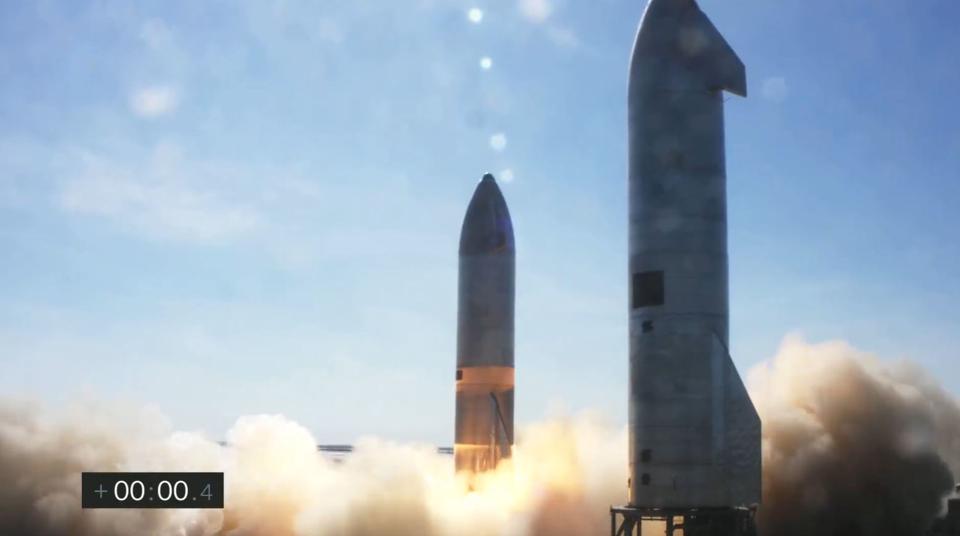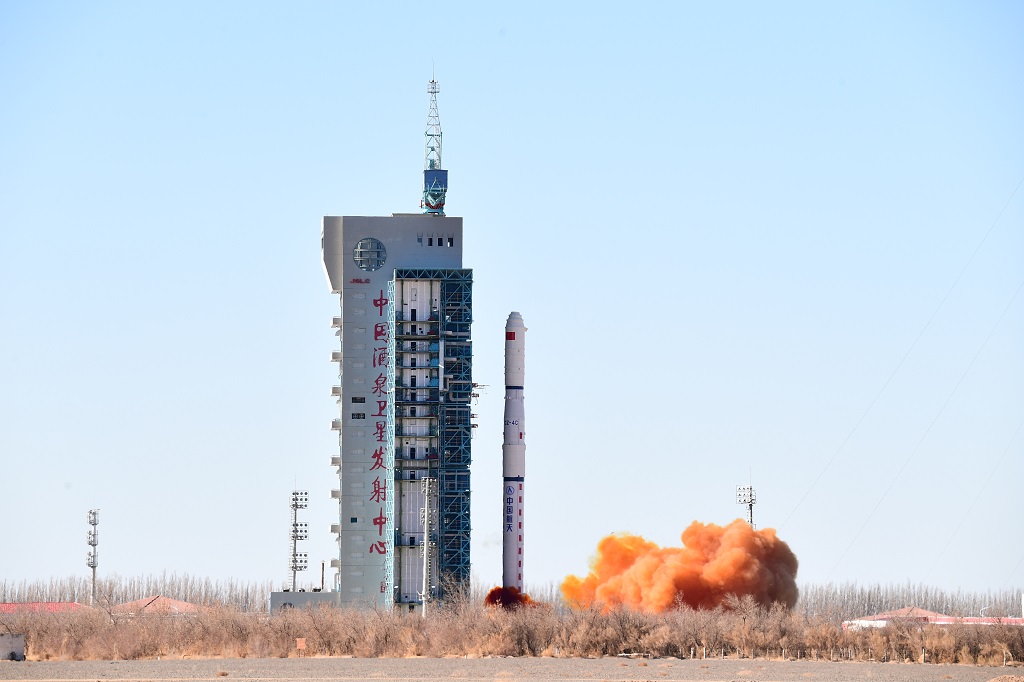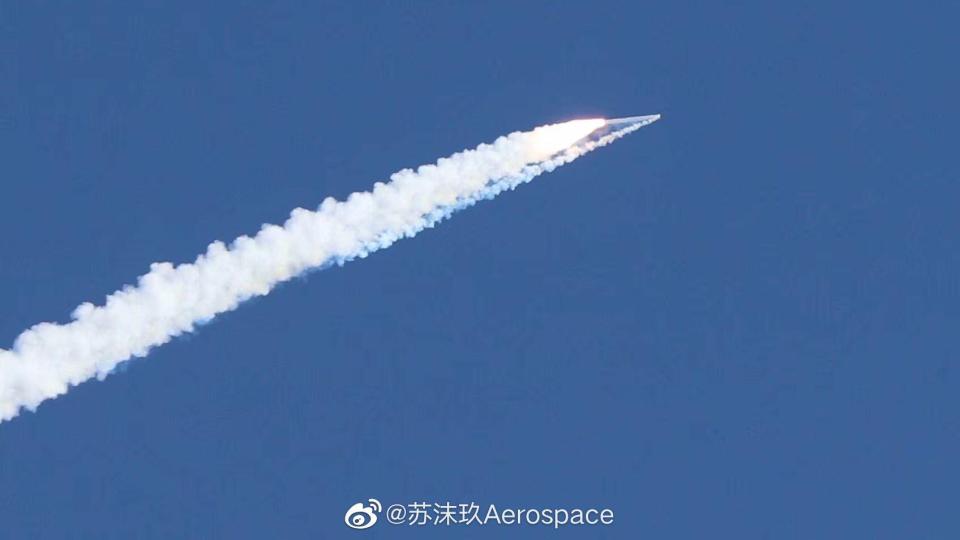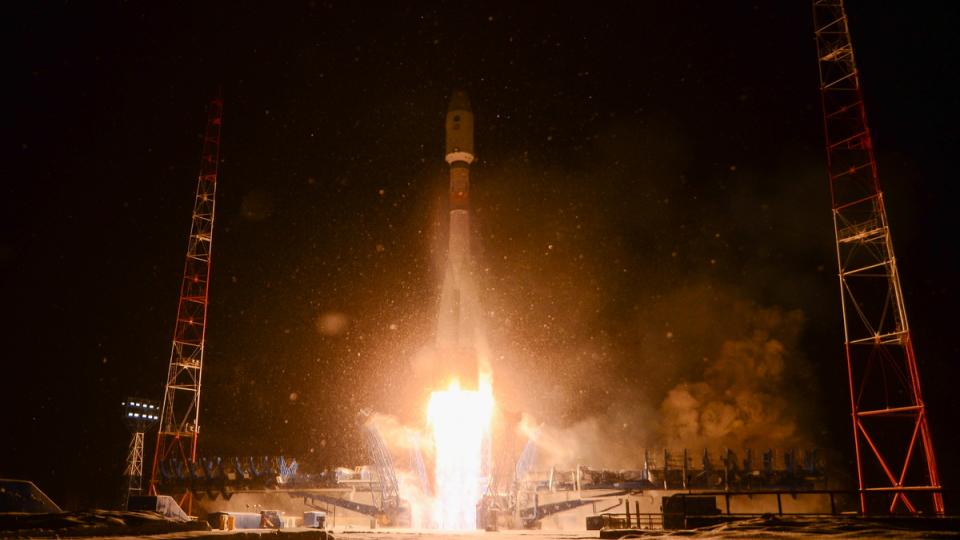Join us for this week’s Rocket Roundup with host Annie Wilson as we look back at the launches that happened over the last week, including that one grain silo that popped up over Boca Chica, Texas yesterday.
Media
Transcript
Hello, and welcome to the Daily Space. My name is Annie Wilson and most weekdays the CosmoQuest team is here putting science in your brain.
Wednesdays, however, are for Rocket Roundup. Let’s get to it, shall we?
To get it out of the way because I know you’ve all been excited about this:
On February 2nd at 18:25 UTC, SpaceX finally launched their SN9 vehicle from Pad B at the Boca Chica Launch Site. We had all thought – including SpaceX – that this would happen last week, but the launch had to be delayed while SpaceX worked through public safety concerns with the FAA.

One of those concerns was random people being in unsafe locations during launch.
Which is a valid concern.
Yesterday’s launch took place after a brief hold in the count to allow the county sheriff to intercept a silver pickup truck in the restricted area. SN9 ascended smoothly up to ten kilometers, shutting down engines as necessary to limit flight aerodynamic loads and stay subsonic.
At apogee, the vehicle tilted horizontally and began maneuvering using its aero surfaces. At about one kilometer altitude, the vehicle reignited two of its three engines and attempted to flip back vertical for landing. Unfortunately, only one of the engines successfully restarted, while unburnt propellant and flaming hunks of metal were observed coming from the other engine. This resulted in combustion instability in the engine that did ignite properly, turning the engine’s nice blue flame into a yellow color.
The vehicle missed vertical as it tried to maneuver from its belly flop back upright for landing. SN9 impacted the ground at a weird angle, exploding and sending large pieces of metal, Composite Overwrap Pressure Vessels, and a cloud of liquid oxygen showering in every direction.
The entire flight lasted about 6 minutes and 26 seconds, and we have a full video linked to our website, DailySpace.org.
As a reminder, SpaceX expects these kinds of dramatic failures while they work to design and test their rockets iteratively over time. They push their systems to the limits so they can learn more about how they can fail and engineer solutions. Also, SN9 is the rocket that fell over in the high bay. This is a rocket that had to be repaired after getting smooshed into a wall. SN9 fell over, got damaged, and still flew. That is kind of awesome.
With SN9 out of the way, let’s return to our normal rundown of what has tried to go up in the last week.

First up, on January 29th at 04:47 UTC, a Long March 4C took off from Jiuquan Satellite Launch Center in northwestern China. Onboard was the Yaogan-31 02 mission, a set of three Earth observation satellites. These will join the existing constellation of Yaogan satellites, seven of which launched in 2020.
“Yaogan” translates to “Remote Observing,” so it makes sense that the China Academy of Space Technology stated that the new satellites “will be mainly used to carry out electromagnetic environment detection and related technical tests.” Not much else is publicly known about the Yaogan satellites, and news coverage of the launch wasn’t extremely detailed: just a brief mention of the mission and that the launch was successful.
Next up: on February 1 at 08:15 UTC, an i-Space Hyperbola-1 rocket took off from Jiuquan Satellite Launch Center in northwestern China.
Unfortunately, the launch was far from successful with the vehicle going off course in dramatic fashion shortly after liftoff. Several hours after launch, i-Space put out a press release stating that an investigation into the failure had begun.

This was the second launch of the Hyperbola-1 rocket. The first launch in July 2019, also from the Jiquan Satellite Launch Center, was successful and reportedly placed several payloads into orbit.
While this was technically the second launch of a Hyperbola-1 rocket, the first and second rockets were very different.
The launch vehicle seems to have been redesigned from the first flight to the second flight. The first launch vehicle, Y1, was 20.8 meters tall and the diameter tapers from 1.4 m at the bottom to 1.2 m at the top. Meanwhile, the second launch vehicle, Y2, is taller — coming in at 24 meters tall. It has a consistent diameter of 1.4 meters.
With all these external changes, we can only guess that things are also different inside the rockets.
One additional factor in this launch, which the internet was quick to meme, was the inclusion of Xu Bing’s art on the side of the rocket. Designed to look like Chinese Song-style font from the Ming dynasty, the beautiful characters actually meant nothing, leading folks to make jokes along the lines that when the sky can’t read your rocket, it may reject it. We’ll link to more of Xu Bing’s work in the show notes and hope to see the inclusion of more art on future missions.
Xinhua News Agency previously reported that, if successful, Y2 would have become “the first privately-owned commercial launch vehicle model successfully launched in China.” While this wasn’t a successful launch, we look forward to seeing i-Space return with a new vehicle and new launch attempt in the not too distant future.
On to our next launch! On February 2nd at 20:45 UTC the Russian Space Forces successfully launched a Soyuz 2.1b from the Plesetsk Cosmodrome in northern Russia. The Lotos-S is part of the Liana system which is replacing the Soviet-era Tselina-2 series of satellites. This was the 1,931st launch of an R7-based Soyuz rocket since 1957.

The primary mission for Lotos is ELINT, which is short for “Electronic Intelligence”. To put it simply, Lotos is a spy satellite. This is why we really don’t have a lot of publicly-available information to share. However, I can talk a little about ELINT in general.
Basically, ELINT starts with recordings of any and all information about electromagnetic signals: the frequencies, timing, durations, directions, intensities, and so on. Then you compare that to everything else you know about the device, hardware type it belongs to, and the military units that may possibly be using it. From there you compare all of that to where it’s being used, and to what is going on around it, such as things like deployments or military maneuvers.
From the combination of all these things you know, you can sometimes learn very useful information, like whether or not you can translate the signals themselves. For instance, you might discover that a satellite has synthetic aperture radar capability you didn’t know about from the types of signals it emits, or you might find out which naval groups are using which signaling channels, or which particular ground stations control which military units.
Why would something like this be useful? What’s the point of knowing a bunch of information about the signal, but not the information in the signal? Pretend you’re on a ship headed from North America to the UK during World War II. German U-Boats were known to track and sink Allied ships so the UK couldn’t stockpile goods that would be needed to survive a series of land battles. The Germans were finding the Allied ships using the Allied radio signals, and the Allied ships were able to chase down or avoid U-Boats because of the German radio signals. Neither side needed to know what was being communicated over the radio to achieve their aim.
And now, for something a bit different. The majority of the launches we talk about on Rocket Roundup are orbital launches. But those aren’t the only type of launches. Rockets can also be launched on suborbital trajectories. This means the rocket may or may not reach space by crossing the Kármán line at 100 kilometers, but they definitely do not achieve orbit. Most suborbital launches don’t attract much attention, despite their being an important part of fields of study like atmospheric research and meteorology.
This past Sunday, January 31st, at 21:37 UTC, a small company called bluShift Aerospace, based in Brunswick, Maine, made rocketry history when it launched Stardust 1.0 from the Loring Commerce Centre in Aroostook County in northeastern Maine. This was the first commercial rocket launch in the state of Maine and the first commercial launch using a hybrid bio-derived fuel propellant with a liquid oxidizer.

This very first rocket launch from Maine flew to roughly 5,200 feet — or 1,584 meters — before it returned by parachute. Some of the people in the CosmoQuest community who watched the launch together in our Discord server on Sunday said that Stardust 1.0 looked like a larger version of the Estes model rockets they built as kids, right down to the classic orange parachute.
The Stardust rocket is small, just six meters in length and weighing in at 250 kilograms. Its design and size make it relatively inexpensive to build. Combine that with a fuel that costs less per kilogram than traditional rocket fuel, is completely non-toxic, and has the added benefit of being carbon-neutral, and you have Stardust as an affordable option for students, researchers, and companies that want to conduct experiments in space. Now before you ask, we don’t actually know what their biofuel is made of; it’s proprietary. As more is revealed, we’ll bring you all the answers here on the Daily Space.
bluShift’s goal is to develop a line of rockets powered by bio-derived fuels to launch small satellites into space. They have plans for a second Stardust 1.0 launch in July 2021 that will also be suborbital, and launches will occur every six months or so of future generations of their rockets, culminating with a model called Red Dwarf that will go to polar orbit as early as October 2024.
bluShift’s debut launch payload consisted of a high school experiment and tests on an alloy called nitinol developed by Kellogg Research Labs in Salem, New Hampshire. Nitinol is an alloy that “remembers” its shape, making it useful in medical devices such as stents. It’s also used to protect payloads from vibrations. Kellogg Research Labs is heavily involved in space, and they are trying to get into upcoming missions to the Moon and Mars. The lab’s founder, Joe Kellogg, says that their “long-term goal is to build whole rockets out of nitinol”.
It is week five of 2021, and we’re averaging more than a launch a week!
Let’s take a look at 2021 in numbers.
For human space flight, we have five space toilets and six people in orbit, with one launch.
Those space toilets include — 3 installed on ISS, 1 on the Crew Dragon, 1 on the Soyuz
Total 2021 orbital launch attempts: 9, including 1 failure
Total satellites from launches: 220
I keep track of orbital launches by where they launched from, also known as spaceport. Here’s that breakdown:
USA: 4
China: 3
New Zealand: 1
Russia: 1
Your random space fact of the week is that Sunday marked the 63rd anniversary of the first satellite launched by the USA.

On January 31, 1958, Explorer 1 was launched by the Army Ballistic Missile Agency. The Jet Propulsion Laboratory developed the mission payload in a remarkably fast 3 months. According to NASA, The scientific instrument carried on Explorer 1 was a cosmic ray detector designed to measure the radiation environment in Earth orbit. Once in space, this experiment, provided by Dr. James Van Allen of the University of Iowa, revealed a much lower cosmic ray count than expected. Van Allen theorized that the instrument may have been saturated by very strong radiation from a belt of charged particles trapped in space by Earth’s magnetic field. The existence of these radiation belts was confirmed by another U.S. satellite launched two months later, and they became known as the Van Allen Belts in honor of their discoverer.
Explorer 1 transmitted for 6 months and decayed out of Earth orbit in March 1970, 12 years after launch.
We’ve come a long way in 63 years. Heck, we’ve come a long way in the past week with SpaceX’s SN9 and bluShift’s launch from Maine.
Space is hard, but awesome advances are happening. And we’ll report them as they happen.
This has been the Daily Space.
Learn More
SpaceX Launches SN9 to Spectacular, If Not Perfect, Results
China Launches Yaogan-31 02 Satellite
- CAST press release (Chinese)
- Space China press release (Chinese)
- People’s Daily article
- Yaogan info page (Gunter’s Space Page)
- Launch video
Second Hyperbola-1 Launch Fails for i-Space
- i-Space press release (Chinese)
- Xinhua Net article (Chinese)
- Fangzhou 2 info page (Gunter’s Space Page)
Russian Space Forces Launch Another Classified Payload
- Russian Military press release (Russian)
- Roscosmos press release (Russian)
- NASA Spaceflight article
- Launch video
bluShift Aerospace Successfully Launches Suborbital Rocket From Maine
- BBC story
- Stardust 1.0 info page (bluShift)
- Launch video
Random Space Fact: USA Launched First Satellite on January 31, 1958
- Explorer-1 info page (NASA)
Credits
Host: Annie Wilson
Writers: Dave Ballard, Gordon Dewis, Pamela Gay, Beth Johnson, Erik Madaus, Ally Pelphrey, and Annie Wilson
Audio and Video Editing: Ally Pelphrey
Content Editing by Beth Johnson
Executive Producer: Pamela Gay
Intro and Outro music by Kevin MacLeod, https://incompetech.com/music/


 We record most shows live, on Twitch. Follow us today to get alerts when we go live.
We record most shows live, on Twitch. Follow us today to get alerts when we go live.